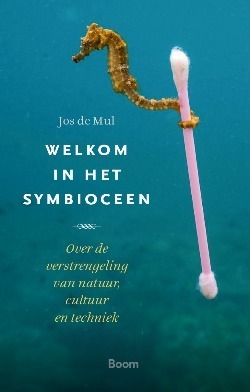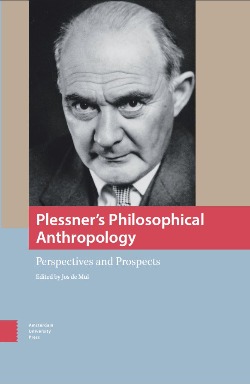Transhumanismo. La convergencia de evolutión, humanismo y tecnologia de la información
Jos de Mul. Transhumanismo. La convergencia de evolutión, humanismo y tecnologia de la información (in Spanish), Arquitectonics (Edicions UPC), 2001
Transhumanisme - de convergentie van evolutie, humanisme en informatietechnologie
Jos de Mul. Transhumanisme - de convergentie van evolutie, humanisme en informatietechnologie. Tydskrif vir Geesteswetenskappe. Vol. 45, no. 2, 159-176.
 Het humanisme (…) is niets anders dan het vertrouwen, dat de geestelijke krachten, die nodig zijn om het leven tot zijn hoogste mogelijkheden te brengen, gewekt worden door de omgang met mensen in heden en verleden, die over die krachten beschikken.
Het humanisme (…) is niets anders dan het vertrouwen, dat de geestelijke krachten, die nodig zijn om het leven tot zijn hoogste mogelijkheden te brengen, gewekt worden door de omgang met mensen in heden en verleden, die over die krachten beschikken.
H.J. Pos
Het humanistische gedachtegoed is in de afgelopen eeuwen uitgekristalliseerd via een groot aantal confrontaties en interacties met andere stromingen. Zoals Harry Kunneman terecht heeft opgemerkt zijn de humanisten daarbij in het verleden veelal in het offensief geweest: “Als vertegenwoordigers van een universele mensvisie trokken zij ten strijde tegen traditionalisme en religieus dogmatisme, in naam van waarden als redelijkheid, gelijkwaardigheid, medemenselijkheid en onbelemmerde zelfontplooiing. In die strijd wisten zij de geschiedenis aan hun zijde, de geschiedenis van de westerse beschaving en daarmee ook de geschiedenis van de mensheid, vanaf het stralende begin van de ware humanitas in de antieke cultuur tot en met het uitzicht op ‘welvaart en welvaren voor allen’ dat door industrialisering, modernisering en verwetenschappelijking geboden werd. Het positieve zelfbeeld van het twintigste-eeuwse humanisme wordt ten diepste door zijn zelfbewuste moderniteit gestempeld, door het trotse besef ten opzichte van religie en traditie de positieve, toekomstgerichte kracht te vertegenwoordigen”.[1] Volgens Kunneman lijken de rollen aan het einde van de twintigste eeuw omgedraaid. In het bijzonder in de confrontatie tussen humanisme en postmodernisme zijn het de humanisten die in de verdediging worden gedrongen. De humanisten, niet gewend vanuit een defensieve positie te argumenteren, gaan deze confrontatie vaak uit de weg door het postmodernisme gemakzuchtig af te doen als ‘ongebreideld relativisme’ of ‘onvervalst nihilisme’. Volgens Kunneman is dat een weinig vruchtbare strategie, niet alleen omdat het postmodernisme behartigenswaardige kritiek zou hebben geuit op de nauw met het moderne humanisme verstrengelde technisch-wetenschappelijke rationaliteit en het vertrouwen in de maakbaarheid en beheersbaarheid van de wereld, maar vooral ook omdat de postmoderne kritiek wordt gedragen door waarden die in de humanistische traditie een centrale plaats innemen, zoals zelfontplooiing, levenskunst en radicale zelfkritiek. In Kunnemans visie is het postmodernisme een geradicaliseerde vorm van humanisme, die het humanisme in staat stelt humanistische noties als individualiteit, autonomie en gemeenschappelijkheid opnieuw en radicaler te denken (76).
Hoewel Kunneman in zijn artikel de postmoderne kritiek op het denken in hiërarchisch gewaardeerde opposities - hij noemt als voorbeelden hoog-laag, blank-zwart, modern-traditioneel, man-vrouw, autochtoon-allochtoon, rijk-arm, waar-onwaar - onderschrijft, maakt hij in zijn poging humanisme en postmodernisme te verzoenen zelf op een opvallende wijze gebruik van deze denkfiguur. Zowel ten aanzien van het humanisme als ten aanzien van het postmodernisme onderscheidt hij namelijk een goede en een slechte variant. Zo plaatst hij tegenover het slechte, met technische rationaliteit en beheersingsdenken verbonden humanisme uit de negentiende en twintigste eeuw het goede, onder andere door Montaigne vertegenwoordigde humanisme uit de zestiende eeuw, dat in het teken staat van lichamelijkheid, contextualiteit en openheid (68). En ten aanzien van het postmodernisme onderscheidt Kunneman het goede, door humanistische waarden geïnspireerde postmodernisme van Lyotard en consorten van het slechte postmodernisme, dat samenvalt met “de hedendaagse, door en door moderne, laatkapitalistische consumptiecultuur”, die wordt gekenmerkt door “de nieuwe dominantie van het beeld boven de tekst, van de videoclip boven de roman, van de databank boven het archiefkaartje, van het netwerk boven de briefwisseling en de globalisering en flexibilisering van industriële en postindustriële productieprocessen” en “het ontstaan van wereldomspannende amusements- en informatienetwerken met steeds snellere omlooptijden” (67).
Hoewel ik niet zou willen ontkennen dat er interessante overeenkomsten bestaan tussen het zestiende-eeuwse humanisme en bepaalde motieven in het postmoderne denken, en bovendien onderschrijf dat deze motieven relevant zijn voor de zelfreflectie en zelfkritiek van het huidige humanisme[2], ben ik van mening dat Kunneman door de door hem gehanteerde dichotomieën geen recht doet aan het complexe en ambivalente karakter van de (post)moderne cultuur.[3] Het karikaturale beeld dat hij van het ‘slechte’ (want hypermoderne) postmodernisme schetst, voert hem zonder noemenswaardige argumentatie tot de conclusie dat deze vorm van postmodernisme “nog veel nihilistischer blijkt te zijn en veel bedreigender voor centrale humanistische ideeën zoals de rationaliteit en de autonomie van het subject, dan de principiële kritiek die postmoderne filosofen op die ideeën naar voren brengen” (67). Kunneman vervalt daarmee in dezelfde gemakzuchtige afwijzing van onwelgevallige kritiek die hij zijn medehumanisten verwijt, en hij ontneemt zichzelf en zijn lezers daardoor de mogelijkheid een serieuze confrontatie aan te gaan met de mijns inziens niet minder radicale kritiek die vanuit dit ‘slechte’ postmodernisme op het humanisme wordt geuit.
Deze confrontatie is alleen daarom al van het grootste belang voor het humanisme, omdat de door Kunneman met het ‘slechte’ postmodernisme verbonden kapitalistische informatiemaatschappij zich razendsnel en op mondiale schaal aan het ontwikkelen is tot het dominante maatschappijtype.[4] Humanisten zullen hoe dan ook een positie moeten innemen tegenover deze ontwikkeling. Wat deze confrontatie nog dringender maakt, is dat ook deze hypermodernen claimen dat zij bij uitstek de dragers zijn van het humanistische gedachtegoed. In hun visie heeft de door Kunneman verfoeide “verstrengeling van humaniteit en technische rationaliteit” (70) juist in belangrijke mate bijgedragen aan de realisatie van humanistische idealen als “redelijkheid, gelijkwaardigheid, medemenselijkheid en onbelemmerde zelfontplooiing” (65). De genoemde confrontatie met het ‘slechte’ (hypermoderne) postmodernisme is ten slotte van levensbelang voor het huma(nism)e, omdat de hypermodernen juist aan het humanistische ideaal van onbelemmerde zelfontplooiing hun motivatie ontlenen om de mens en zijn beperkingen te boven te komen.
Het is niet mijn bedoeling in dit artikel de hiërarchische oppositie tussen het ‘goede’ (anti-moderne) en ‘slechte’ (hypermoderne) postmodernisme opnieuw om te draaien en tegenover Kunneman een pleidooi te houden voor het laatste. Het gaat er mij veeleer om de door Kunneman veronachtzaamde zijde van de confrontatie tussen humanisme en postmodernisme en de daaruit voortvloeiende vragen te belichten. Ik zal dat doen door een bespreking van het gedachtegoed van het transhumanisme, een beweging die het hypermoderne programma van het ‘slechte’ postmodernisme het meest expliciet en radicaal uitdraagt. Na een introductie van het programma van deze beweging, die zich toespitst op het werk van Hans Moravec (§1), zal ik vanuit een evolutionistisch-technologisch perspectief betogen dat het door de transhumanisten gepropagandeerde toekomstscenario niet zonder plausibiliteit is (§2). Ten slotte zal ik enkele van de radicale normatieve vragen die het transhumanistische programma aan het humanisme voorlegt, aan de orde stellen (§3).
Tragisch ouderschap en de attitude van de ouderbegeleider
Gerry van den Broek en Jos de Mul. Tragisch ouderschap en de attitude van de ouderbegeleider. In: Systeemtherapie.Jrg.10, no. 2 (1998), 90-100.
Tragedy and repetition
Tragedy and repetition. XPONIKA AIΣΘHTIKHΣ / Annales d'esthetique / Annals for Aesthetics, Vol.46. Volume B (2011), 191-202.
Abstract According to writers such as Nietzsche, Steiner, and Oudemans and Lardinois the tragic culture of the Greeks has become entirely alien to us. They argue that within the Christian and modern worldview there is no place for tragedy anymore. In this article it is claimed that this does not entail in any shape or form that tragic events cannot take place anymore within Christian and modern culture. In modern culture this particularly happens, with no lack of tragic irony, precisely in the domain in which we believed tragedy had been eliminated: (our interaction with) technology.
Although technological tragedies differ in many respects from classical tragedies, they also show deep continuities. Just as in the case of their classical models, the behavior of the tragic heroes of our time is characterized by miscalculation (hamartia), blindness (atè) with regard to the tragic reality and foolhardiness (hybris).Now, tragic events do not automatically raise tragic awareness. Tragedies are characterized by the fact that the tragic heroes – unlike the spectators – are unaware of the fate that is befalling them, and coming about because of them. But most tragedies also have a reversal of circumstances (peripéteia), a moment at which hopeful expectation crumbles and the hero suddenly becomes aware of his tragic position. Postmodernity is another way of saying that modern culture recognizes itself as tragic.
The Tragedy of Finitude. Dilthey's Hermeneutics of Life
Jos de Mul. The Tragedy of Finitude. Dilthey's Hermeneutics of Life. Analecta Hermeneutica, Vol. 1, no. 1 (2009), 248-251.
The publication of substantial parts of Wilhelm Dilthey’s philosophical legacy in volumes 17 (1977), 19 (1982), 20 (1990), 21 (1997), and 23 (2000) of his Gesammelte Schriften necessitates a thorough reinterpretation of his entire philosophy. The Tragedy of Finitude. Dilthey''s Hermeneutics of Life aims to contribute to such a reinterpretation by reconstructing the ontological foundation of Dilthey’s hermeneutics of life.
The Tragedy of Finitude (Books in summary)
Jos de Mul. The Tragedy of Finitude (Books in summary). History and Theory, Vol. 45 (February 2006), 148-149.
The possibility of an island. Michel Houellebecq's tragic humanism
Jos de Mul, The possibility of an island. Michel Houellebecq's tragic humanism. Journal of Aesthetics and Phenomenology, Vol. 1 (2014), Issue 1, pp. 91–110.
The Possibility of an Island: Michel Houellebecq’s Tragic Humanism1
Abstract
Various authors, including Friedrich Nietzsche and George Steiner, have argued that the tragic worldview, as we find it expressed in Greek tragedy, has become an entirely incomprehensible phenomenon for (post)modern man. The claim defended in this article radically opposes this view. It is argued that tragedy can still teach us something today, and maybe even more so now than in the many intervening centuries that separate us from her days of glory in the fifth century bce. The tragic reveals itself once more in (post)modern society, and nowhere more clearly than in technology, the domain in which we believed the tragic had been domesticated or even eliminated. Referring to the tragic humanism in Michel Houellebecq’s novels The Elementary Particles and The Possibility of an Island it is argued that it is precisely in (post)modern (bio)technologies that we experience the rebirth of the tragic.
Keywords: tragedy, technology, humanism, transhumanism, Michel Houellebecq, Friedrich Nietzsche
The Living Sign. Reading Noble from a Biosemiotic Perspective
Jos de mul. The Living Sign. Reading Noble from a Biosemiotic Perspective. Biosemiotics. 14 (2021), 1, (https://doi.org/10.1007/s12304-021-09426-y)
Abstract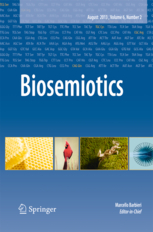 The author argues that the reductionist illusions of the Modern Synthesis, which Noble criticizes in his target article, are to a large extent resulting from a mere syntactical notion of biological information, neglecting the pragmatic and semantic dimension of information. Although the syntactical notion, introduced by Shannon, has been applied with much success in information theory and computer technologies, it is too narrow to understand biological reality. Biosemiotics can help to clarify the problems identified by Noble, and offers a more adequate biological information concept, which not only may help to overcome these problems in the life sciences, but may also serve to integrate natural-scientific and humanities approaches to life.
The author argues that the reductionist illusions of the Modern Synthesis, which Noble criticizes in his target article, are to a large extent resulting from a mere syntactical notion of biological information, neglecting the pragmatic and semantic dimension of information. Although the syntactical notion, introduced by Shannon, has been applied with much success in information theory and computer technologies, it is too narrow to understand biological reality. Biosemiotics can help to clarify the problems identified by Noble, and offers a more adequate biological information concept, which not only may help to overcome these problems in the life sciences, but may also serve to integrate natural-scientific and humanities approaches to life.
Keywords Biosemiotics . Noble . Living sign . Syntactics . Pragmatics . Semantics
The Informatization of the worldview
Jos de Mul. The Informatization of the worldview. In: Information, Communication & Society. Vol. 2, no. 1 (1999),69-94.
Abstract
.png) The development of information and communication technology in the second half of the twentieth century in crucial respects resembles the development of mechanics in the sixteenth and seventeenth century as it has been described by Dijksterhuis in his study The Mechanization of the World Picture. In both cases specific technological developments not only lead to important changes in the natural and human sciences, but also profoundly affect culture as a whole and eventually result in a fundamental change in worldview. In this article the author attempts to elucidate the present ‘informatization of the worldview’ in a twofold way. On the one hand, against the background of Dijksterhuis’ analysis of the concept of mèchanè, a clarification is given of the concept of information, which has become central to many sciences in the last decades. It is argued that much of the confusion and misuse that surrounds (the application of) this concept can be reduced by making a careful distinction between the pragmatic, semantic and syntactic dimensions of information. Next, on basis of this clarification, the author discusses the transformation from a mechanistic to an informationistic worldview. Whereas the mechanistic worldview is characterized by the postulates of analyzability, lawfulness and controllability, the informationistic worldview is characterized by the postulates of synthetizability, programmability and manipulability. It is argued that although the informationistic worldview in some respects (for instance it its mathematical orientation) is clearly a continuation of the mechanistic worldview, in other respects it fundamentally alters human experience and the evaluation of, and association with reality.
The development of information and communication technology in the second half of the twentieth century in crucial respects resembles the development of mechanics in the sixteenth and seventeenth century as it has been described by Dijksterhuis in his study The Mechanization of the World Picture. In both cases specific technological developments not only lead to important changes in the natural and human sciences, but also profoundly affect culture as a whole and eventually result in a fundamental change in worldview. In this article the author attempts to elucidate the present ‘informatization of the worldview’ in a twofold way. On the one hand, against the background of Dijksterhuis’ analysis of the concept of mèchanè, a clarification is given of the concept of information, which has become central to many sciences in the last decades. It is argued that much of the confusion and misuse that surrounds (the application of) this concept can be reduced by making a careful distinction between the pragmatic, semantic and syntactic dimensions of information. Next, on basis of this clarification, the author discusses the transformation from a mechanistic to an informationistic worldview. Whereas the mechanistic worldview is characterized by the postulates of analyzability, lawfulness and controllability, the informationistic worldview is characterized by the postulates of synthetizability, programmability and manipulability. It is argued that although the informationistic worldview in some respects (for instance it its mathematical orientation) is clearly a continuation of the mechanistic worldview, in other respects it fundamentally alters human experience and the evaluation of, and association with reality.
The Emergence of Practical Self-Understanding. Human Agency and Downward Causation in Plessner’s Philosophical Anthropology
Jos de Mul. The Emergence of Practical Self-Understanding. Human Agency and Downward Causation in Plessner’s Philosophical Anthropology. In: Human Studies, December 2018 (DOI: 10.1007/s10746-018-09483-2)
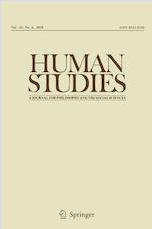
Keywords Helmuth Plessner · Philosophical anthropology · Non-reductionist naturalism · Emergentism · Downward causation · Human agency · Practical selfunderstanding
The Earth Garden. Going Back or Going Forward to Nature?
Jos de Mul. The Earth Garden: Going Back or Going Forward to Nature? Frontiers of Philosophy in China. Vol.12 (2017) 2: 237-248.
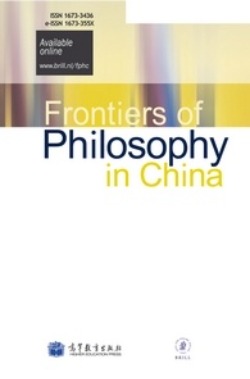 Abstract Against the background of a short meditation on the contrasting ways in which landscape has been represented and idealized in Eastern and Western painting traditions, the article will try to show, using some striking examples, that the development of landscape painting in the last two centuries reflects the changing relationship of humanity and nature, leading in both the East and in the West to either the expression of a nostalgic longing for nature to be back as it once was, or to a gloomy expression of the vanishing of nature amidst the modern, technological world. Connecting to both the concept of “harmony,” which is a key concept in Eastern aesthetics, and to some recent reflections in Western philosophy on the relationship of nature and technology, a post-nostalgic conception of nature and natural beauty is defended, in which nature and technology are no longer seen as opposing categories, but rather as poles that are intertwined in an ever-lasting process of co-evolution. It is argued that we should not so much strive to go “back to nature,” but rather to go “forward to nature” and establish a new harmony between human and non-human nature and technology. The article ends with some reflections on the role artists and aestheticians may play in this transformation.
Abstract Against the background of a short meditation on the contrasting ways in which landscape has been represented and idealized in Eastern and Western painting traditions, the article will try to show, using some striking examples, that the development of landscape painting in the last two centuries reflects the changing relationship of humanity and nature, leading in both the East and in the West to either the expression of a nostalgic longing for nature to be back as it once was, or to a gloomy expression of the vanishing of nature amidst the modern, technological world. Connecting to both the concept of “harmony,” which is a key concept in Eastern aesthetics, and to some recent reflections in Western philosophy on the relationship of nature and technology, a post-nostalgic conception of nature and natural beauty is defended, in which nature and technology are no longer seen as opposing categories, but rather as poles that are intertwined in an ever-lasting process of co-evolution. It is argued that we should not so much strive to go “back to nature,” but rather to go “forward to nature” and establish a new harmony between human and non-human nature and technology. The article ends with some reflections on the role artists and aestheticians may play in this transformation.
Keywords environmental pollution, environmental aesthetics, philosophy of nature, comparative aesthetics, philosophy of technology








